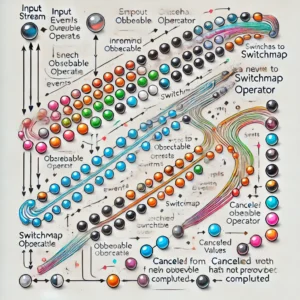Introduction
Overview of Build Systems
In the world of software development, build systems are essential tools that automate the process of converting source code into executable software. They manage dependencies, package applications, and ensure consistency across different environments. This automation saves time and reduces the likelihood of human error, making development more efficient and reliable.
Introduction to Gradle
Gradle is a robust build automation tool widely used in Android development. It merges the strengths of other build tools like Apache Ant and Apache Maven, providing flexibility and high performance. Gradle excels in dependency management, supports multi-project builds, and integrates seamlessly with Android Studio, making it a critical tool for Android developers.
Understanding Gradle Scripts
What are Gradle Scripts?
Gradle scripts are the core of the build process, written in either Groovy or Kotlin DSL. These scripts define the steps required to build the project, including compiling code, managing dependencies, and packaging the app for distribution. They are essential for customizing the build process to meet specific project needs.
Structure of a Gradle Project
A typical Gradle-based Android project consists of several scripts and directories:
- build.gradle (Project-level): Configurations that apply to the entire project.
- build.gradle (Module-level): Specific to each module (e.g., app, library).
- settings.gradle: Includes all modules in the project.
- gradle.properties: Global properties for the project.
- local.properties: Local properties (e.g., SDK location) that shouldn’t be shared.
Different Gradle Scripts
Project-level build.gradle
- Purpose: Manages global project configurations, classpath dependencies, and repository settings.
- Common Configurations: Repositories (google(), mavenCentral()), classpath dependencies (e.g., Android Gradle Plugin).
Module-level build.gradle
- Purpose: Manages configurations for individual modules like the app or libraries.
- Common Configurations:
- Plugins: com.android.application, kotlin-android.
- Android Configurations: compileSdkVersion, defaultConfig, buildTypes.
- Dependencies: External libraries, project dependencies.
Settings.gradle
- Purpose: Lists all the modules in the project.
- Common Configurations: This file typically includes a list of all modules in the project using the
includestatement, such asinclude ':app', ':library', to ensure they are included in the build process.
Gradle Properties
- gradle.properties File: Defines global properties for the project, such as JVM arguments and environment-specific settings.
- Common Configurations: org.gradle.jvmargs=-Xmx2048m, custom properties like MY_API_KEY.
Key Blocks in Gradle Scripts
Plugins
- Definition and Purpose: Plugins extend Gradle’s capabilities. For example, the com.android.application plugin converts a project into an Android application.
- Common Plugins: com.android.application, com.android.library, kotlin-android, kotlin-kapt.
Buildscript Block
- Definition and Purpose: Specifies the repositories and dependencies required for the build script itself.
- Common Configurations:
buildscript {
repositories {
google()
mavenCentral()
}
dependencies {
classpath "com.android.tools.build:gradle:4.1.0"
}
}Repositories
- Definition and Purpose: Define where to find project dependencies.
- Common Repositories:
repositories {
google()
mavenCentral()
}Dependencies
- Definition and Purpose: List external libraries and modules that the project depends on.
- Common Dependencies:
dependencies {
implementation "org.jetbrains.kotlin:kotlin-stdlib:1.4.10"
implementation "com.squareup.retrofit2:retrofit:2.9.0"
}Android Block
- Definition and Purpose: Contains all Android-specific configurations.
- Common Configurations:
android {
compileSdkVersion 30
defaultConfig {
applicationId "com.example.myapp"
minSdkVersion 16
targetSdkVersion 30
versionCode 1
versionName "1.0"
}
buildTypes {
release {
minifyEnabled false
proguardFiles getDefaultProguardFile('proguard-android-optimize.txt'), 'proguard-rules.pro'
}
}
}Tasks
- Definition and Purpose: Custom actions that can be executed during the build process.
- Common Tasks:
task clean(type: Delete) {
delete rootProject.buildDir
}Advanced Configurations
Gradle Wrapper
- Definition and Importance: The Gradle Wrapper ensures that everyone working on the project uses the same Gradle version, improving build consistency and avoiding version conflicts.
- Usage:
./gradlew buildCustom Build Types and Product Flavors
- Custom Build Types: Define different build configurations, such as debug and release.
buildTypes {
staging {
initWith debug
matchingFallbacks = ['debug']
}
}- Product Flavors: Allow you to create different versions of your app, such as free and paid versions.
flavorDimensions "version"
productFlavors {
free {
dimension "version"
}
paid {
dimension "version"
}
}Dependency Management
- Configurations: implementation, api, compileOnly, etc., each have different scopes and impacts on the build.
dependencies {
implementation "com.squareup.okhttp3:okhttp:4.9.0"
api "com.squareup.retrofit2:retrofit:2.9.0"
}Multi-module Projects
- Configuration and Management: Split a large project into multiple modules to improve maintainability and build performance.
include ':app', ':library'Tips and Best Practices
Optimization Tips
- Parallel Execution: Enable parallel execution to speed up builds.
org.gradle.parallel=true- Daemon: Use the Gradle Daemon to improve build times.
org.gradle.daemon=trueBest Practices
- Version Control: Keep your gradle.properties and build.gradle files under version control.
- Modularization: Break down large projects into smaller, manageable modules.
- Dependency Management: Use a consistent strategy for managing dependencies to avoid conflicts.
Conclusion
Summary
In this guide, we explored the essentials of using Gradle in Android development, from understanding different Gradle scripts to advanced configurations and best practices. Gradle’s flexibility and power make it an indispensable tool for Android developers.
Further Reading
Don’t be afraid to dive deeper into Gradle’s capabilities. Experiment with different configurations, optimize your build process, and make the most of this powerful tool in your Android projects.






